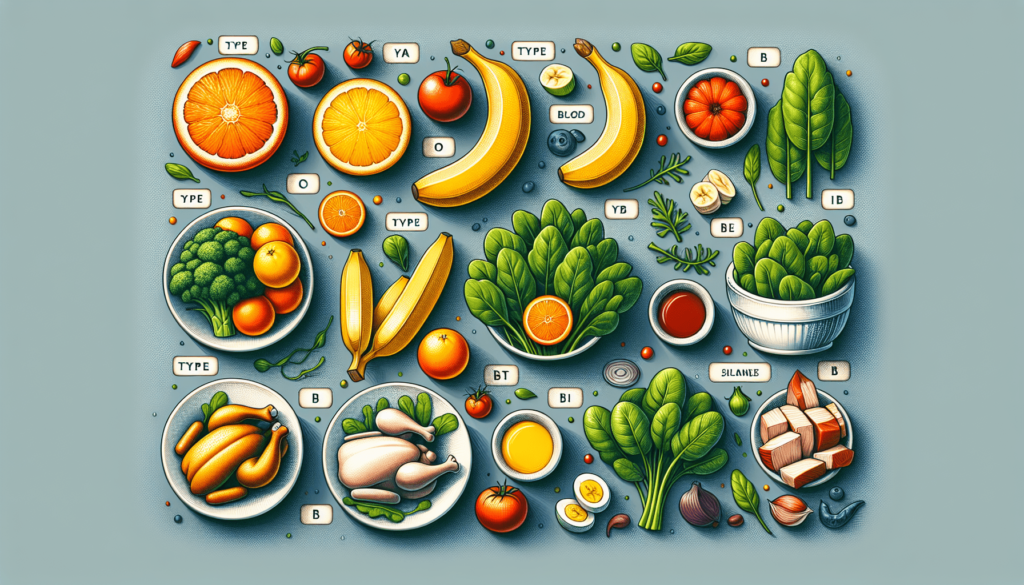Is Eating for Your Blood Type Fact or Fiction?
Have you ever heard about the idea of eating for your blood type? Some people believe that eating specific foods based on their blood type can improve their health and overall well-being. But is there any truth to this? Let’s take a closer look at the concept of eating for your blood type to determine if it’s fact or fiction.

Understanding the Blood Type Diet
The concept of eating for your blood type is based on the Blood Type Diet, which was created by naturopathic physician Dr. Peter D’Adamo in the late 1990s. According to the Blood Type Diet, people with different blood types should follow specific dietary guidelines to promote optimal health.
How Does Your Blood Type Affect Your Diet?
Your blood type is determined by the presence or absence of certain antigens on the surface of your red blood cells. There are four main blood types – A, B, AB, and O. Each blood type has specific dietary recommendations based on the idea that certain foods can either be beneficial or harmful for individuals based on their blood type.
The Type A Blood Diet
If you have blood type A, you are encouraged to follow a primarily plant-based diet. This means focusing on fruits, vegetables, whole grains, legumes, and lean proteins. Foods to avoid include red meat, dairy, and certain processed foods. The Type A diet is often referred to as the “agrarian” diet, as it is similar to the diets of our agrarian ancestors.
The Type B Blood Diet
For individuals with blood type B, the recommended diet includes a variety of foods, including meats, dairy, fruits, and vegetables. The Type B diet is often referred to as the “nomad” diet, as it allows for more flexibility in food choices compared to other blood types. Foods to avoid include certain types of seafood, corn, and lentils.

The Type AB Blood Diet
If you have blood type AB, your diet should include a combination of foods recommended for both Type A and Type B blood types. This means incorporating a variety of fruits, vegetables, whole grains, and lean proteins into your meals. Foods to avoid include caffeine, alcohol, and smoked or cured meats. The Type AB diet is often referred to as the “modern” diet, as it combines elements of both traditional diets.
The Type O Blood Diet
Individuals with blood type O are encouraged to follow a high-protein diet that includes lean meats, fish, and poultry. The Type O diet is often referred to as the “hunter” diet, as it is based on the diets of our hunter-gatherer ancestors. Foods to avoid include dairy, wheat, and certain legumes.
Does Eating for Your Blood Type Work?
While the concept of eating for your blood type may seem intriguing, there is limited scientific evidence to support its effectiveness. Some studies have suggested that certain blood types may be more prone to certain health conditions, but the idea that specific foods can benefit or harm individuals based on their blood type is not widely supported by research.
Benefits of Eating for Your Blood Type
Despite the lack of scientific evidence, some people who follow the Blood Type Diet claim to experience benefits such as improved digestion, increased energy levels, and better overall health. Supporters of the diet believe that by eating foods that are compatible with their blood type, they can optimize their body’s natural processes and prevent disease.
Drawbacks of Eating for Your Blood Type
Critics of the Blood Type Diet argue that the recommendations are overly restrictive and may not be sustainable in the long term. Some experts suggest that the benefits experienced by individuals following the diet may be attributed to healthier food choices rather than their blood type.
Should You Eat for Your Blood Type?
Ultimately, the decision to eat for your blood type is a personal one. If you are curious about the Blood Type Diet and want to give it a try, it’s important to approach it with an open mind and listen to your body’s feedback. Keep in mind that no single diet is right for everyone, and what works for one person may not work for another.
Tips for Following the Blood Type Diet
If you decide to try eating for your blood type, here are some tips to help you get started:
- Consult with a healthcare professional or registered dietitian before making any significant changes to your diet.
- Keep a food diary to track how different foods make you feel.
- Focus on whole, unprocessed foods and avoid foods that are known to cause inflammation or digestive issues.
- Be open to experimenting with new foods and recipes to find what works best for your body.
Summary
In conclusion, the concept of eating for your blood type is a controversial topic that continues to spark debate among experts and individuals alike. While the Blood Type Diet may offer some benefits to certain individuals, it is essential to approach it with caution and skepticism. Remember that no diet is a one-size-fits-all solution, and the key to optimal health is to listen to your body and make choices that support your overall well-being. Whether you choose to eat for your blood type or not, make sure to prioritize a balanced and varied diet that nourishes your body and mind.

